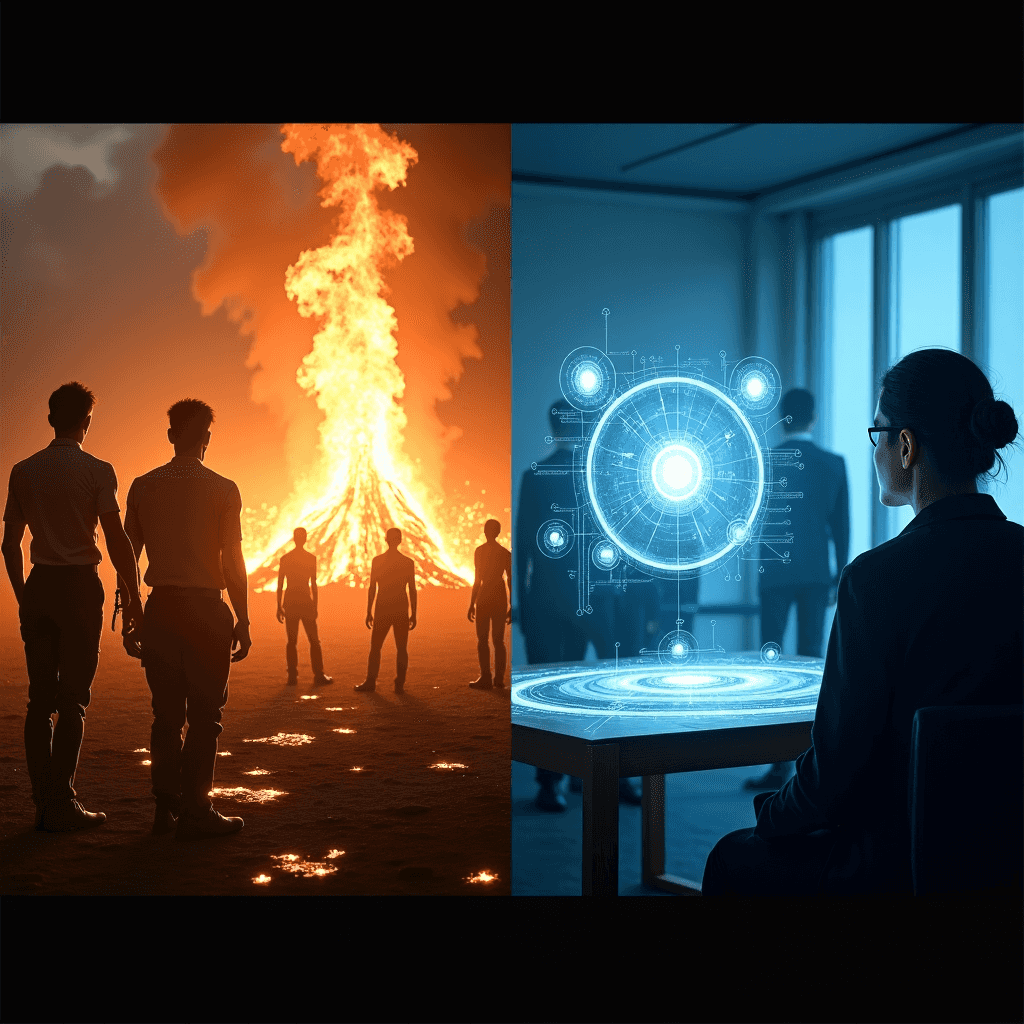First Large-Scale Study Reveals How AI is Actually Being Used in the Workplace

My day-to-day has become deeply intertwined with AI. From my development environment to project planning, I’ve built workflows where AI agents are indispensable partners, buying back minutes and hours of my time. But I’ve noticed a growing digital divide: while some of us are crafting sophisticated AI workflows and integrating multiple models into our daily work, others still view AI solely through the lens of ChatGPT – just another app on their phone.
This disconnect can be jarring. When I talk about my AI-augmented workflows with “normal” people, I often feel like I’m speaking a different language. The gap between power users who are reshaping their work with AI and those who’ve barely scratched the surface is widening. Yet, I remain hopeful. I’ve seen the spark of recognition when people first grasp how these tools can amplify their creativity and effectiveness.
Against this backdrop of varying AI adoption, a groundbreaking new study from Anthropic provides fascinating data-driven insights into how AI is actually being used in the workplace, revealing patterns that highlight both the potential and the adoption challenges we face.
The Growing AI Divide
What’s particularly striking about the current state of AI adoption is the emerging class divide in how these tools are being used. On one end of the spectrum, we have power users who have moved far beyond basic chatbots:
- Integrated Workflows: We’re building complex systems where multiple AI models work together, each specialized for different tasks
- Custom Solutions: Rather than using AI tools as standalone apps, we’re crafting personalized workflows that fit our specific needs
- Deep Integration: AI isn’t just a tool we occasionally use - it’s woven into the fabric of our daily work, from code reviews to documentation to system design
On the other end, we have those whose AI experience is limited to consumer-facing applications. For them, AI is:
- A chatbot for quick answers
- A tool for generating images
- Something they’ve heard about but haven’t integrated into their workflow
This divide isn’t just about access to technology - it’s about understanding the possibilities. When I demonstrate how I use AI to augment my work, I often see a transformation in people’s perspectives. They move from viewing AI as a novelty to seeing it as a powerful tool for amplifying their own capabilities.

The Technical Reality of AI Usage
The finding that direclty relates to my life? Software development dominates current AI usage, accounting for 37.2% of all interactions. This isn’t just about code completion - the data reveals sophisticated patterns of how developers are integrating AI into their workflows:
- Debugging and Error Resolution: A significant portion of software development interactions follow a “Feedback Loop” pattern, where developers iteratively work with AI to diagnose and fix issues
- Architecture and Design: Developers frequently use AI for higher-level tasks like system design and architecture planning
- Documentation and Code Review: AI assists in generating technical documentation and reviewing code for potential improvements
Beyond Code: The Full Spectrum of AI Integration
While software development leads the pack, the study reveals a broader pattern of AI usage across technical roles:
Content Creation and Technical Writing (10.3%)
- Documentation generation
- Technical specification writing
- API documentation
Data Analysis and Research
- Complex problem solving
- Data interpretation
- Research synthesis
Technical Education and Knowledge Transfer
- Explaining technical concepts
- Creating learning materials
- Answering technical questions
The Automation vs. Augmentation Balance
One of the most interesting findings challenges the common narrative about AI replacing human workers. The data shows that 57% of interactions focus on augmentation (enhancing human capabilities) while 43% involve automation. For engineers and technical leaders, this suggests a more nuanced approach to AI integration. Rather than focusing solely on automation, the data points to AI’s role as a collaborative tool that enhances human capabilities.
Technical Integration Patterns
The study reveals several key patterns in how AI is being effectively integrated into technical workflows:
Task-Level Integration: About 36% of occupations use AI for at least a quarter of their tasks, but only 4% show usage across 75% or more of their tasks. This suggests AI is best used for specific, well-defined tasks rather than wholesale job automation.
Skill Complementarity: AI shows highest usage in tasks requiring:
- Critical thinking
- Programming
- Complex problem solving
- Technical writing
Workflow Optimization: The most successful integrations combine:
- Quick iterations (rapid prototyping and testing)
- Validation workflows (AI-assisted review and improvement)
- Knowledge augmentation (leveraging AI for research and learning)
Engineering Implications
For technical teams looking to effectively integrate AI, the data suggests several best practices:
Focus on Augmentation: Design workflows where AI enhances rather than replaces human expertise. The data shows this pattern leads to more successful outcomes.
Task-Specific Integration: Instead of trying to automate entire roles, identify specific tasks where AI can provide the most value. The study shows this targeted approach is more effective.
Feedback Loops: Implement workflows that facilitate rapid iteration between human and AI. This pattern appears frequently in successful software development use cases.
Looking Ahead
This research provides the first empirical foundation for understanding AI’s role in technical work. As AI capabilities continue to evolve, we can expect:
- More sophisticated integration patterns emerging in software development
- Expansion into new technical domains as capabilities grow
- Continued emphasis on human-AI collaboration rather than pure automation
For engineers and technical leaders, this data provides a roadmap for thinking about AI integration. It’s not about replacing human expertise, but about finding the right balance of automation and augmentation to enhance our technical capabilities.
The future of technical work isn’t about AI taking over - it’s about learning to work effectively with AI as a powerful tool in our engineering toolkit.
Want to dive deeper into the research? Check out the full paper for detailed methodology and findings.
Newsletter
Related Posts
Quick Links
Legal Stuff

